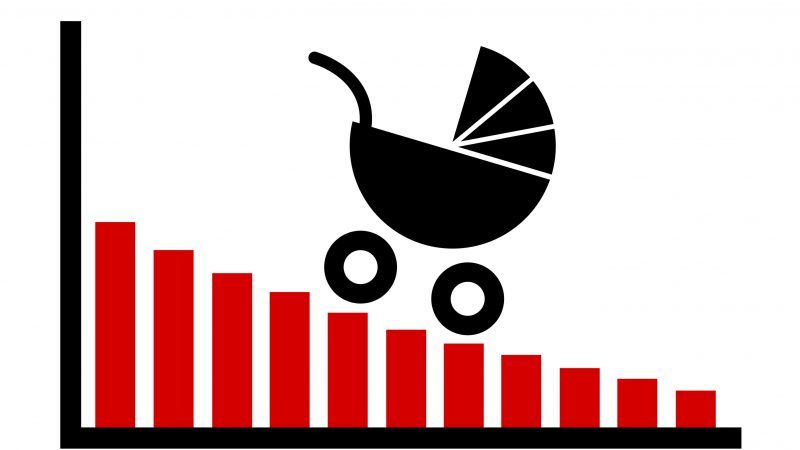U.S. Fertility Falls to Lowest Rate Ever
The number of children that families choose to have is none of the government's business.

The country's total fertility rate hit a record low last year, prompting yet another round of calls for the government to do something to encourage Americans to have more babies. But this isn't a sign of a crisis that needs fixing—it's a sign that people have more control over their lives.
The total fertility rate (TFR) is the total number of children likely to be born to a woman in her lifetime, assuming her generation's level of fertility remains unchanged. A TFR of about 2.1 children per woman is called replacement-level fertility—that is, the average number of children each woman would need to bear to keep a country's population steady. A sustained TFR below that indicates that the population of a country will eventually begin shrinking.
In 2018, according to the latest vital statistics report from the National Center for Health Statistics, the rate hit 1.728. This was a new low, surpassing the previous record of 1.738, reached back in 1976.
This is part of a larger, global trend toward lower fertility rates. In 1950, no country in the world had a TFR below 2.1 children per woman. Now about half of the world's nations are below replacement. Global TFR was around 5 children per woman in 1960; it's 2.4 now.
As per capita GDP and levels of education rise, the number of children that women choose to have falls. This trend evidently alarms some folks, including the right-wing intellectuals and apparatchiks who have recently gathered under the banner of "national conservatism."
"There are a lot of ways to measure a healthy society," claimed J.D. Vance, author of the bestselling Hillbilly Elegy, at the national conservatives' conference. "But the way that I measure a healthy society—the most important way to measure a healthy society—is whether the American nation is having enough children to replace itself."
John A. Burtka IV, executive director of The American Conservative, wrote a Washington Post op-ed proposing that national conservatives adopt a suite of pro-natalist policies. These "might include paid family leave, increasing the child tax credit, federally funded prenatal and maternal care, reducing or eliminating income tax on families with three or more children, and working toward a society in which a mother or father can support a family on a single income."
Similar aggressive pro-natalist policies in France have apparently managed to raise that country's TFR from its nadir of 1.73 in 1994 all the way up to 1.92 in 2017. That's still below replacement. Evidently, bribing people to have babies goes only so far.
But why should the number of children that parents choose to have be any business of the state's minions? It was only a generation ago that overpopulation alarmist Paul Ehrlich was arguing that a tax penalty of $600 per child should be imposed on families. (This was in 1968, when the U.S. median income stood at $7,700 per household.)
Falling fertility rates are, among other things, an indication that folks are less subject to the vagaries of nature and are now availing themselves of their increasing power to choose the number of children that they wish to have. That's not a crisis. It's a good thing.
Show Comments (93)